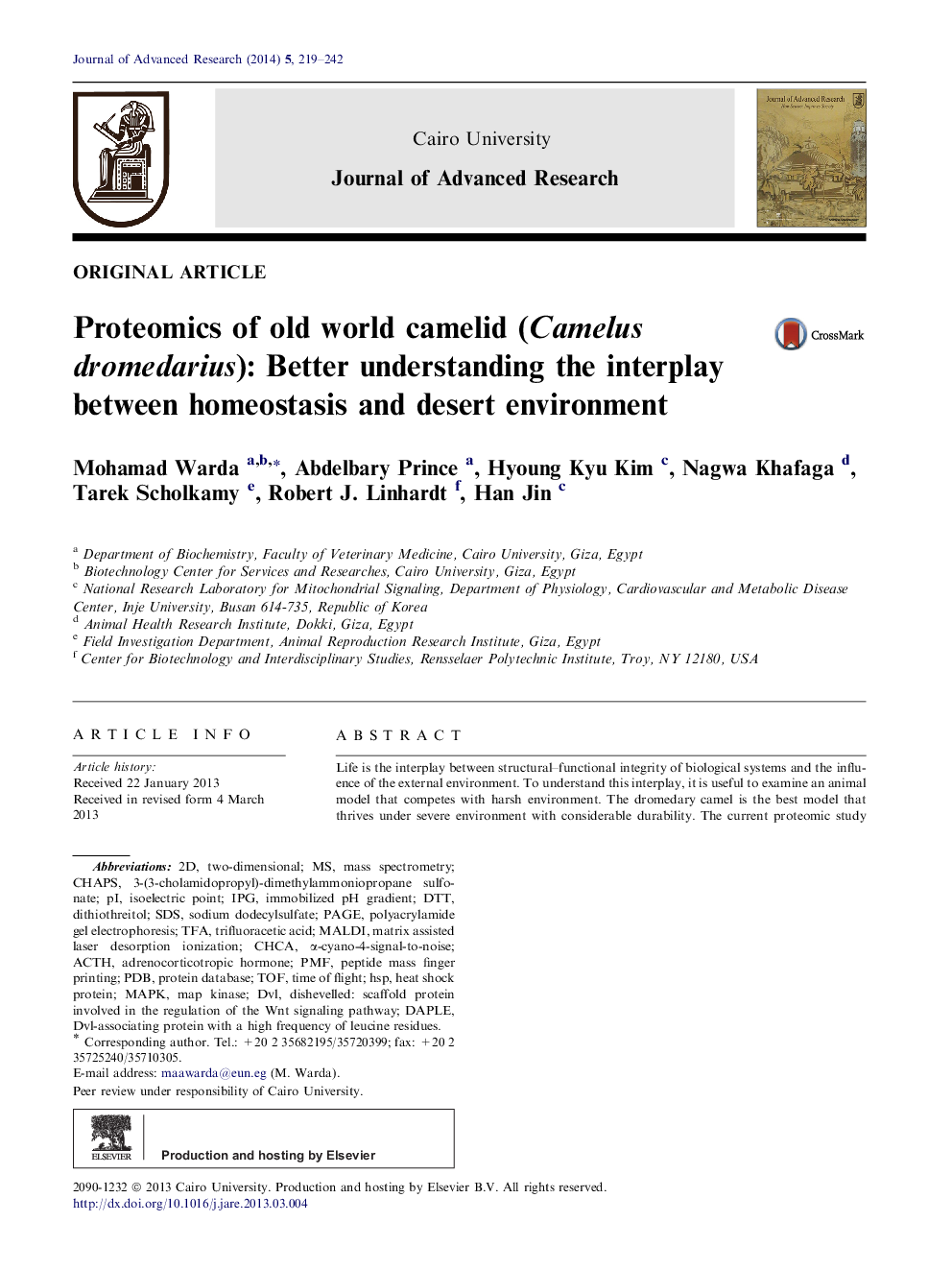| کد مقاله | کد نشریه | سال انتشار | مقاله انگلیسی | نسخه تمام متن |
|---|---|---|---|---|
| 826209 | 907908 | 2014 | 24 صفحه PDF | دانلود رایگان |

Life is the interplay between structural–functional integrity of biological systems and the influence of the external environment. To understand this interplay, it is useful to examine an animal model that competes with harsh environment. The dromedary camel is the best model that thrives under severe environment with considerable durability. The current proteomic study on dromedary organs explains a number of cellular mysteries providing functional correlates to arid living. Proteome profiling of camel organs suggests a marked increased expression of various cytoskeleton proteins that promote intracellular trafficking and communication. The comparative overexpression of α-actinin of dromedary heart when compared with rat heart suggests an adaptive peculiarity to sustain hemoconcentration–hemodilution episodes associated with alternative drought-rehydration periods. Moreover, increased expression of the small heat shock protein, α B-crystallin facilitates protein folding and cellular regenerative capacity in dromedary heart. The observed unbalanced expression of different energy related dependent mitochondrial enzymes suggests the possibility of mitochondrial uncoupling in the heart in this species. The evidence of increased expression of H+-ATPase subunit in camel brain guarantees a rapidly usable energy supply. Interestingly, the guanidinoacetate methyltransferase in camel liver has a renovation effect on high energy phosphate with possible concomitant intercession of ion homeostasis. Surprisingly, both hump fat tissue and kidney proteomes share the altered physical distribution of proteins that favor cellular acidosis. Furthermore, the study suggests a vibrant nature for adipose tissue of camel hump by the up-regulation of vimentin in adipocytes, augmenting lipoprotein translocation, blood glucose trapping, and challenging external physical extra-stress. The results obtained provide new evidence of homeostasis in the arid habitat suitable for this mammal.
Journal: Journal of Advanced Research - Volume 5, Issue 2, March 2014, Pages 219–242